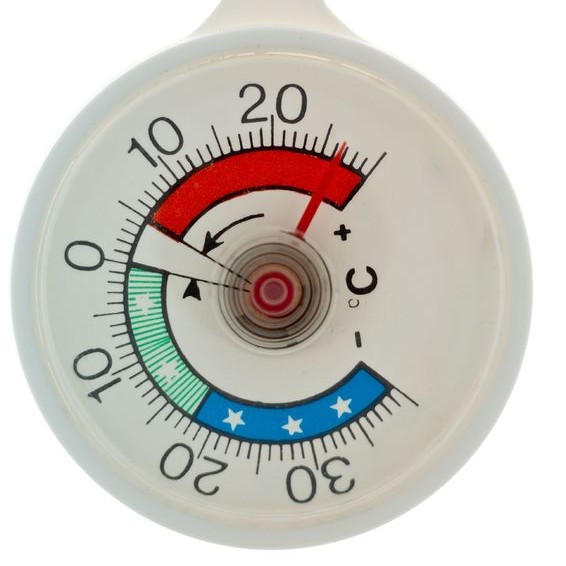
Temperature Control
What is temperature control?
Temperature control is a set of procedures, strategies, measurements, and conditions established to meet and maintain the standards and specifications of a given product and/or process regarding temperature. It is vital for food safety assurance and is used:
- to process food products
- to give desired quality characteristics (texture, color, aroma, etc.)
- as a key microbiological control parameter
By controlling temperature, you can control the growth of bacteria. Most pathogenic bacteria are killed at temperatures above 80°C (176°F), and virtually all chemical reactions in living cells (e.g., fungi, bacteria) are stopped at temperatures near −21°C (−5.8°F). This means keeping the foods out of the danger zone 4–60°C (40–140°F).1
Regulatory compliance2
Temperature control is thoroughly covered and regulated by 21 CFR Part 117. As an example, Sections 40 and 80 state that:
- Freezers and cold storage compartments used to store and hold food capable of supporting growth of microorganisms should be fitted with an indicating thermometer, temperature-measuring device, or temperature-recording device so installed as to show the temperature accurately within the compartment.
- Such cold storage compartments should be fitted with an automatic control for regulating temperature or with an automatic alarm system to indicate a significant temperature change in a manual operation.
- Instruments and controls used for measuring, regulating, or recording temperatures that control or prevent the growth of undesirable microorganisms in food must be accurate and precise and adequately maintained, and adequate in number for their designated uses.
- Raw materials, other ingredients, and rework must be held in bulk, or in containers designed and constructed so as to protect against allergen cross-contact and against contamination, and must be held at such temperature in such a manner as to prevent the food from becoming adulterated.
- Food that can support the rapid growth of undesirable microorganisms must be held at temperatures that will prevent the food from becoming adulterated during manufacturing, processing, packing, and holding.
- Thermal processing, when required in the preparation of food capable of supporting microbial growth, must be effected by heating the food to the required temperature, holding it at this temperature for the required time, and then either rapidly cooling the food or passing it to subsequent manufacturing without delay.
Application
Temperature helps to ensure the safety and wholesomeness of food products throughout all the stages of the food supply chain. It is a dominant food safety and quality control parameter across the supply chain. It can be used in the following stages:
- Initial supply: harvesting, packing, or holding of raw agricultural commodities.
- Manufacturing: manufacturing of value-added products from one or more ingredients, and raw agricultural commodities, e.g., baking, boiling, canning, cooking, cooling, drying/dehydrating, evaporating, extracting juices, freezing, extruding, irradiating, packaging, pasteurizing, washing.
- Storage and distribution: receiving, holding, picking, loading, and transportation.
- Retail: sale of products exhibited on shelves.
- Customer: e.g., home cooking, freezing, refrigeration of food leftovers.
Spoilage and pathogenic fungi and bacteria are major targets of temperature control. Depending on their temperature tolerance and ability to survive and thrive, different microorganisms can be classified as follows:3
- Psychrophiles: minimum 14–41°F, optimum 54–65°F, range = 14–65°F
- Psychrotrophs: minimum 32–41°F, optimum 68–86°F, range = 32–86°F
- Mesophiles: minimum 41–50°F, optimum 86–104°F, range = 41–104°F
- Thermophiles: minimum 68–104°F, optimum 131–150°F, range = 68–150°F
- Hyperthermophile: minimum 176°F, optimum 194–212°F, range = 149–248°F
A remarkable example of a low-temperature-tolerant microorganism is the gram-positive, non-spore-forming pathogenic bacteria known as Listeria monocytogenes, which maintains the ability to grow even under refrigerated conditions.3
Different temperatures can be obtained by either adding heat to the products/processes, or removing heat from them (cooling/freezing).
- Processing by application of heat, i.e., use of temperatures of 90–120°C (194–250°F) may act as a kill factor against microorganisms. Baking, roasting, HTST sterilization, and extrusion are examples.
- Processing by removal of heat, i.e., use of freezing and refrigeration temperatures (−20–4°C) (−4–39°F) may act as a growth inhibition mechanism (virtually all chemical and biological reactions are stopped in this temperature range).
Components of a temperature control program
A facility should establish temperature control mechanisms to significantly minimize or prevent the growth of spoilage and pathogenic microorganisms and/or the toxins produced by them. The facility must conduct the following activities as appropriate to ensure the effectiveness of the temperature controls:
- Identifying the target products, ingredients, additives, and/or raw materials for temperature control
- Defining the optimal temperature conditions for such food materials, e.g., temperature value. Depending on the stage, this value may be high, low, or combinations of both e.g., baking, pasteurization, cold storage.
- Establishing appropriate temperature measurement and monitoring devices, e.g., thermometers (in-line and off-line), recording devices (such as data loggers). Such systems should be placed in the critical areas and stages of the supply chain. Checking monitoring and recording devices for accuracy. Ensuring that calibration procedures are in place.
- Taking corrective actions and procedures in case of temperature deviations outside reasonable control limits that may impact the safety of the foods
- Reviewing records of testing and calibration activities within a reasonable time after the records are created
- Reviewing records of monitoring and corrective actions taken to correct a problem with temperature control within a certain period of time
References
- AIB International. “Tip of the Week: Control Strategies to Address Listeria Monocytogenes Contamination in the Food Processing Establishment.” 2016, http://foodfirst.aibonline.org/foodfirst/2018/1/12/tip-of-the-week-control-strategies-to-address-listeria-contamination-in-the-food-processing-establishment?rq=temperature%20control.
- U.S. Food and Drug Administration. “21 CFR 117 – Current Good Manufacturing Practice, Hazard Analysis, and Risk–based Preventive Controls for Human Food.” 1 Apr. 2017, https://www.accessdata.fda.gov/scripts/cdrh/cfdocs/cfcfr/CFRSearch.cfm?fr=117.130.
- Fellows, P.J. “Properties of Food and Principles of Processing.” Food Processing Technology: Principles and Practice, 4th ed., Elsevier Ltd., 2017, pp. 77–82.

